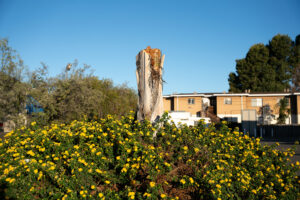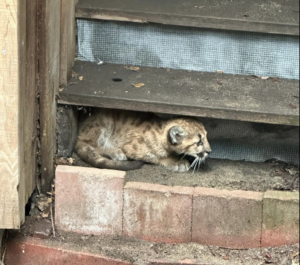As a Marin County-based conservation photographer and wildlife educator, I spend many hours observing wildlife. Bobcats (Lynx rufus) are without question my favorite species to watch and photograph. That passion has led me to observe the same bobcats over years, including a truly special mother who has raised multiple litters of kittens in a suburban environment. Bobcats live throughout the Bay Area, and the march of development into their habitat has forced them to adapt to an increasingly urban life. Relatively few bobcat population studies exist, but a recent one on bobcats south of San José found them in low-to-medium-density housing areas, while the cats were less likely to be in areas with more than five houses per roughly 2.5 acres. Other small studies in Northern California suggest bobcat populations face a multitude of threats, although recent California bans on trapping, hunting, and use of rodenticides that can kill bobcats have offered some protection. How do bobcats adapt to living in suburban settings and raise their kittens surrounded by humans?
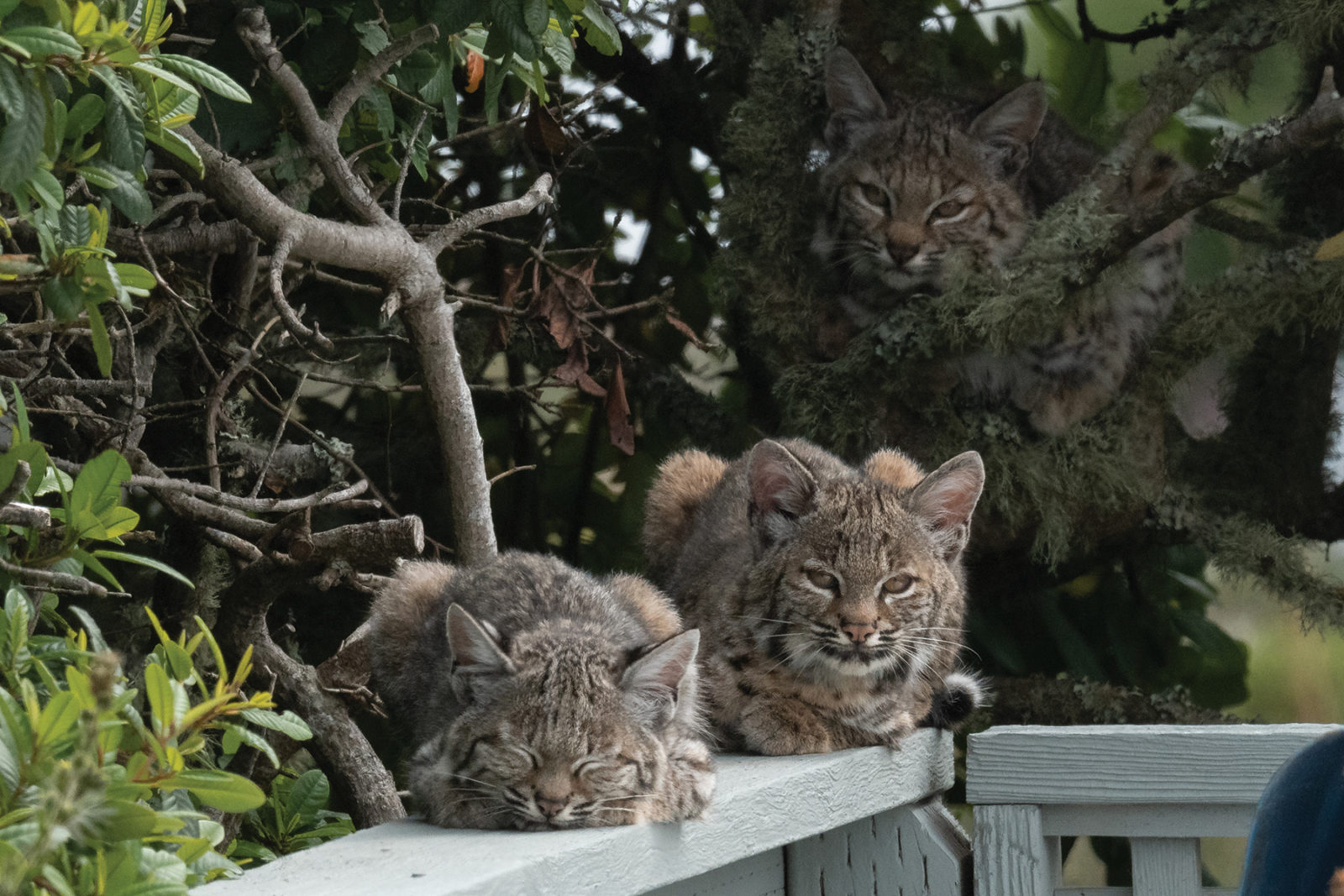
Kittens on the fence | The female bobcat I have followed closely is an experienced mother and adept at finding spots to hide her kittens in this suburban neighborhood. She often stashes them under decks or in dense areas of brush. Like most bobcat mothers, she leaves her kittens in the den while she hunts for food, particularly when they are young. At four months old, these kittens waited patiently for her in a side yard in August. They have distinct personalities — one is spunky and a bit of a bruiser, another is a small, skittish “runt,” and the third kitten has a markedly milder personality than the other two. Alternating between napping and playing, the kittens wrestle, jump on rocks and fence posts, and bat at blades of grass. Some bobcats, having acclimated to living among people, perhaps recognize that raising young near houses provides protection from predators unwilling to come close to humans.
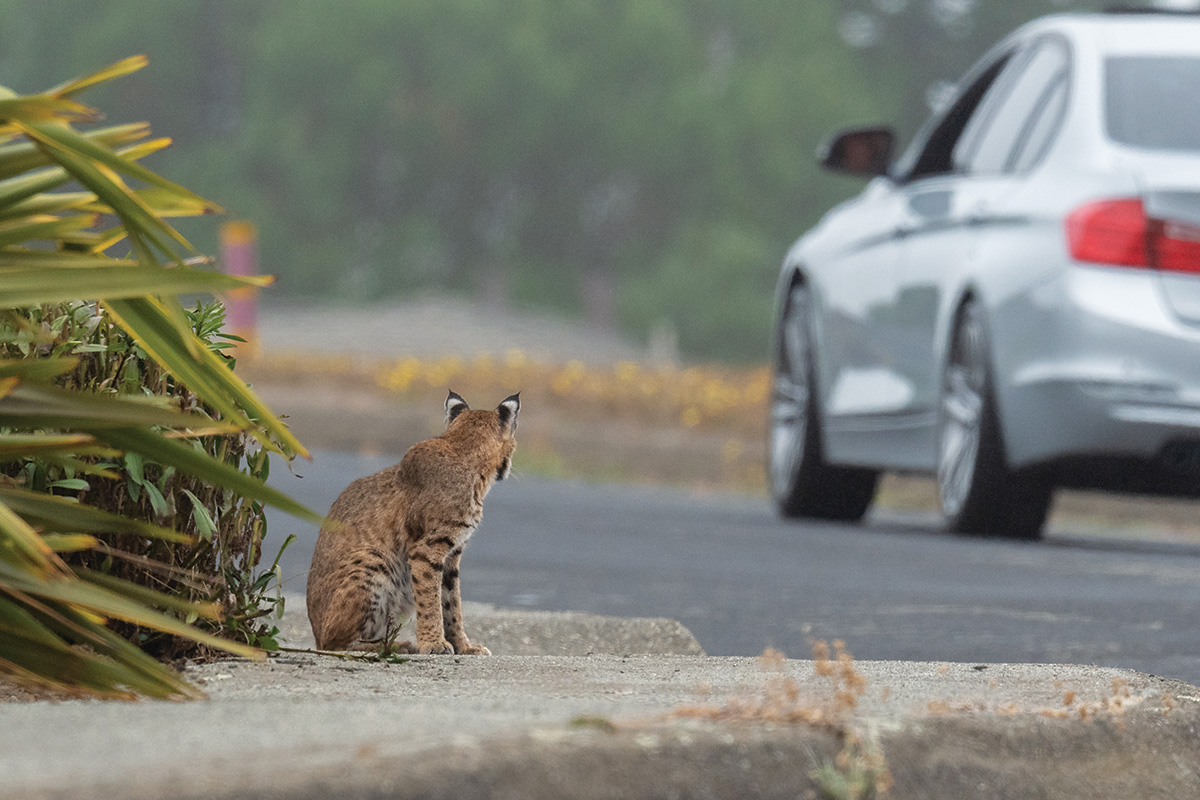
Waiting to cross | When the mother heads out to hunt, I have observed her using sidewalks and crosswalks in her suburban neighborhood. Here, she sits at the edge of a driveway. Roads often traverse a Bay Area bobcat’s territory, separating a den site from hunting grounds. In California a female’s territory averages around two square miles. A male’s territory, usually just under four square miles, can be even larger depending on the terrain and availability of prey. As bobcat territories increasingly include suburban and urban areas, a bobcat’s risk of getting hit or killed by a car also increases.

Hunting space | The mother surveys open space between clusters of houses, looking for a gopher to bring back to the kittens. Bobcats rely on good hearing and keen eyesight to locate prey and will sit patiently for 20 or 30 minutes or more, waiting for just the right moment to strike. Bobcats’ eye structure allows them to see well in low light, but they’re unable to see bright colors the way humans do. Their sense of smell, less important in hunting, helps them identify marked territory.

Jackrabbit | On a sunny afternoon I watched the mother, crouched under a bush in a front yard, suddenly spring forward and grab a black-tailed jackrabbit. The rabbit was almost as big as she was. Bobcats are intense, muscular hunters. When they kill larger prey or are feeding kittens, bobcats will “cache” their prey for later. This mother took the rabbit into a thick coyote brush on the outskirts of the neighborhood and buried it. In my experience, bobcats sometimes hunt repeatedly, in rapid succession. Other times, they’ll conclude a successful hunt with grooming and a short nap. Another day, I watched the mother return to a front yard with a kitten and dig up and eat a different jackrabbit.
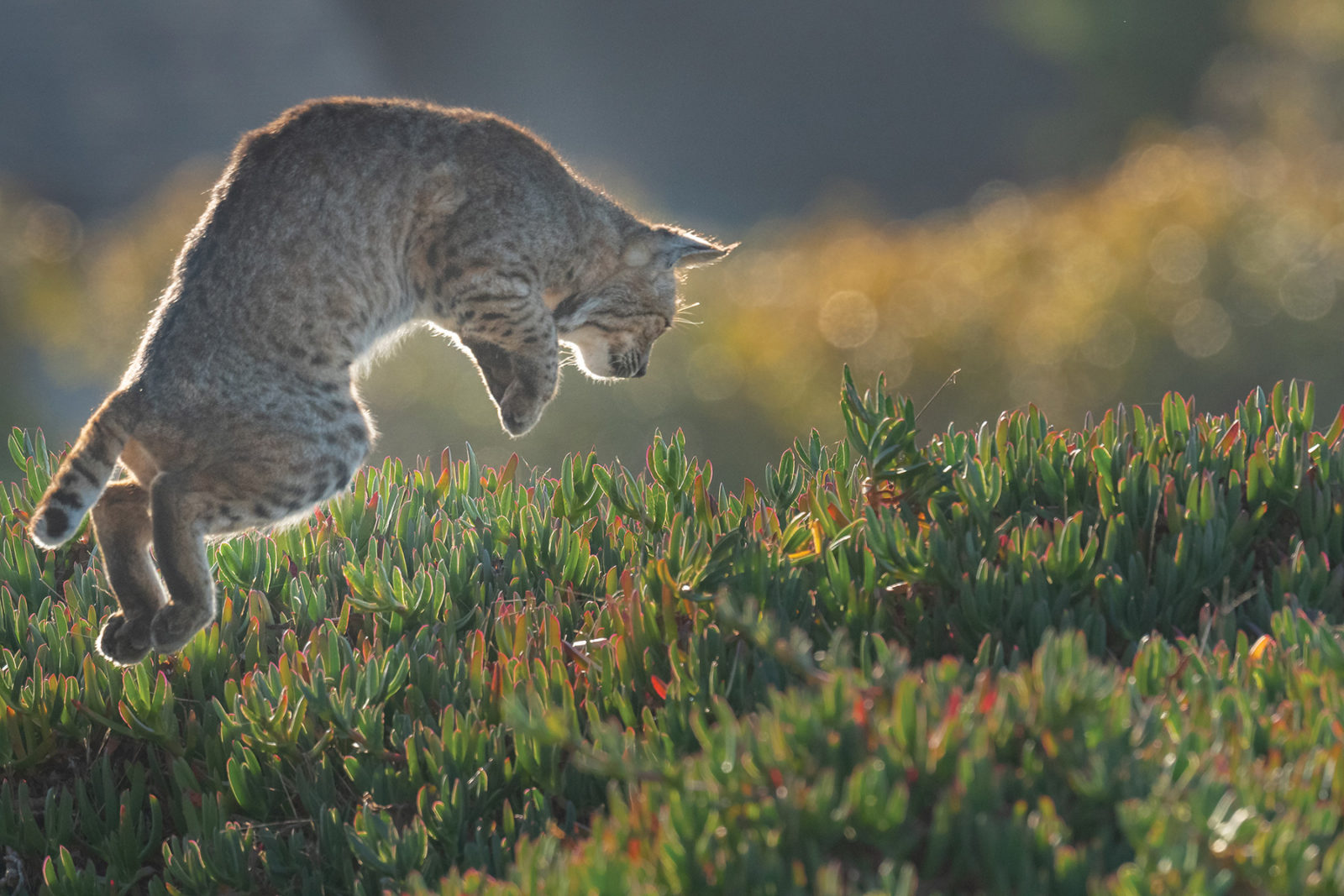
The leap | Locating a rodent under the ice plant, the mother bobcat leaps to pounce on her prey. Here, she missed her quarry, but a talented hunter like this mother is successful in approximately one in three attempts. Bobcats often hunt in late afternoon, and their strategies include leaping in the air and coming down on the prey, lunging horizontally across the top of a gopher hole, or plunging a paw into a hole. Bobcats typically kill their prey with a bite to the back of the neck or the throat. Rodenticides can kill bobcats when they consume poisoned prey and can increase their susceptibility to mange (parasitic mites). These poisons, banned in California for consumer use in 2014, were also outlawed here for commercial use, with a narrow range of exceptions, as of January 1, 2021.

Reunion | When the mother returns from hunting, she goes to find the hidden kittens, calling to them. They may have wandered, so she will have to look for them. Her body language changes to an almost prancing walk; then she’ll sit tall with ears pricked on high alert, scanning for her young. The spunkiest of the litter, the kitten pictured here, enthusiastically embraced its mother, putting its front paws around her neck and licking her face when she returned.
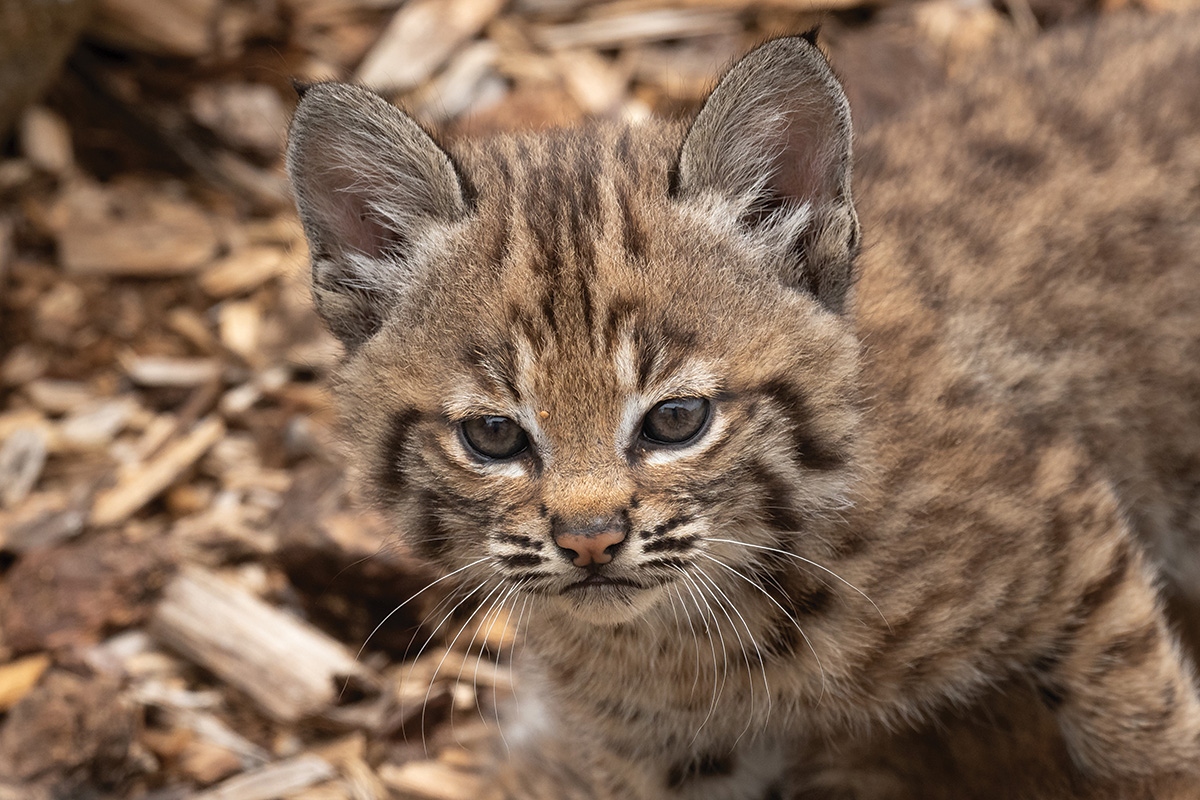
Lost | One day, while I was watching the mother and one of her kittens, a neighbor told me that a kitten had recently been struck and killed by a car. I was devastated. Tracking this bobcat family every week, I kept close tabs on the kittens. Seeing all three was always a relief. Car strikes and rodenticide poisonings are among the most significant dangers faced by suburban bobcats. I believe the kitten with the mild personality was killed, as I continue to see the other two. The mother bobcat’s behavior seemed to change after that. She became more protective of her surviving kittens, keeping them hidden far more than her previous litter. These kittens are also more skittish than their siblings of past years.
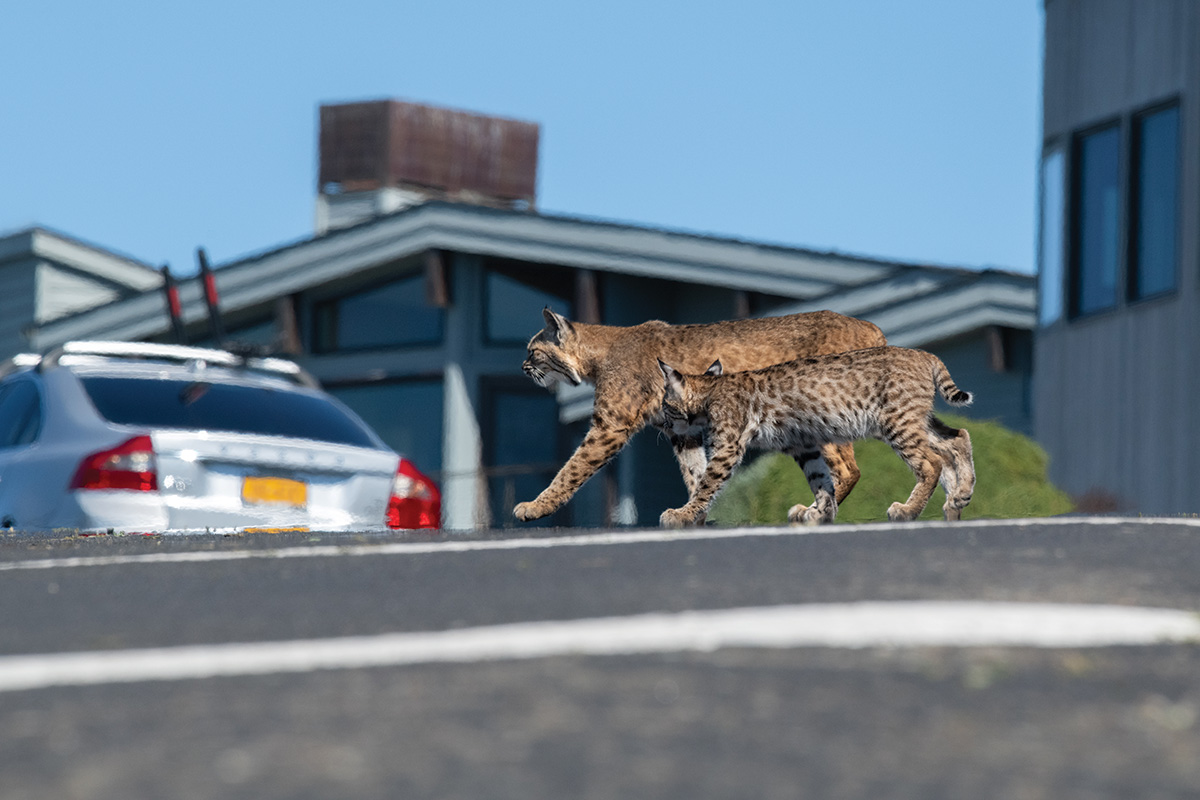
Crossing guard | By the time the kittens reach three to four months, a suburban mother teaches them to cross the street. When she wants the kittens to follow her, she calls with something like a “meow.” When she wants them to remain hiding, she growls if they try to join her. She does the same when standing at a curb, growling to keep them on the sidewalk until it is safe to cross. A month later, they’ll learn to hunt. Sometimes the kittens “blow” their mother’s hunt by running unskillfully after the gopher she is trying to catch. Kittens will typically disperse by the end of their first year to find their own territories. Some observant neighbors say this mother has had at least five litters, so she is likely approaching the end of her life. This litter may well be her last. I feel privileged to have spent so much time with her as she raises her young.



